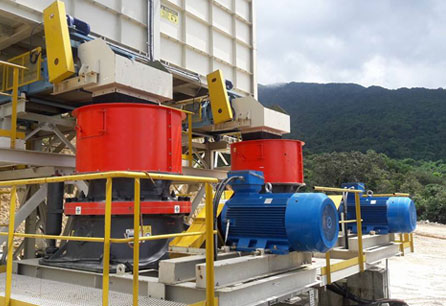Metallurgical screens play a crucial role in crushing and grinding circuits by controlling particle size distribution, improving efficiency, and optimizing downstream processes. Here’s an overview of their functions, types, and applications:
Functions of Metallurgical Screens
1. Size Separation: Ensure oversize material is returned for further crushing/grinding (closed-circuit operation).
2. Load Reduction: Prevent overloading crushers or mills by removing fines early.
3. Product Quality Control: Achieve desired product sizing for leaching, flotation, or other processes.
4. Circuit Efficiency: Improve throughput and reduce energy consumption by recycling only necessary material.
Types of Screens Used
1. Vibrating Screens
– High-frequency screens: Fine wet/dry screening (e.g., hydrocyclone feed optimization).
– Linear motion screens: Heavy-duty scalping before crushers.
– Elliptical/banana screens: Multi-slope designs for high-capacity classification.
2. Trommel Screens
– Used in scrubber circuits or coarse screening (e.g., ROM ore).
3. Grizzly Screens
– Static bars for scalping oversized rocks before primary crushing. 
4. Flip-Flow/Elastomeric Screens
– For sticky or near-size particles prone to blinding.
5. Derrick Stack Sizer®
– Multi-deck fine screening (common in grinding circuits).
Key Applications
- Crushing Circuits: Scalping screens remove fines before primary/secondary crushers; closed-circuit screens recycle oversize.
- Grinding Circuits:
- Blinding/Fouling: Use anti-clogging screen media (polyurethane, rubber) or wash water sprays.
- Wear & Tear: Opt for abrasion-resistant materials (ceramic-lined panels).
- Moisture Sensitivity: Dry screening may require heated decks or air-assisted separation.
- Match aperture size to target P80 (critical size control).
- Balance screen capacity with crusher/mill throughput.
- Monitor screen efficiency (% undersize recovery) regularly.
– Ball mill discharge screens classify slurry (e.g., sieve bends + vibrating screens).
– High-frequency screens replace hydrocyclones for finer classification (~150 µm). 
Challenges & Solutions
Optimization Tips
Would you like details on specific screen selection criteria or case studies?





Leave a Reply